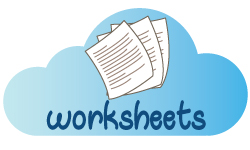Verbals | Types of Verbals & Verbal Phrases
- Grammar Lessons >
- Verbals
"We can only learn to love by loving."
- Iris Murdoch, The BellIntroduction to Verbals
It’s no tall order to understand what a verbal is! We know for a fact that verbs are the most versatile of all parts of speech. They can transform into so many different shapes, every time forming something distinctly unique and calling for hours of dedicated study in grammar. Verbals are one such wonderful shape that verbs sometimes tend to morph into. Although they are not verbs, verbals look a lot like verbs. With a great deal of excited learning and practice surrounding them, verbals account for an important topic in English grammar.
What Are Verbals?
A verbal is a verb form that acts as another part of speech in a sentence. A verbal can function as a noun, direct object, subject complement, an adjective, adverb, or object of a preposition. It also helps form tenses like the perfect and progressive. There are three types of verbals – gerunds, infinitives, and participles.
Examples of Verbals
Brian enjoys swimming.
Traveling is a great experience.
Bertha’s biggest dream is to become an astronaut.
Liam likes to jog every day.
It was great to watch the singing bird.
Mr. Mark wants to see the completed assignment.
We are going swimming in an hour.
The children had finished cleaning before it was 5.
Types of Verbals
There are three types of verbals – gerunds, infinitives, and participles. Each type has its own unique functions, which we are now going to delve into in detail.
Gerunds
A gerund is a verbal that functions as a noun. It’s very easy to identify a gerund as it always ends with -ing. Examples of a gerund include eating, drinking, studying, kayaking, and hiking.
Example Sentences:
Drawing is Rebecca’s favorite pastime. (In this sentence, "drawing" is a verbal and it acts as a noun; it’s the subject of the sentence.)
Wilma doesn’t like drawing. ("Drawing", the gerund, is used as a direct object here.)
Functions of a Gerund
A gerund can act as the subject, direct object, subject complement, or object of a preposition in a sentence.
Examples:
Mountaineering is also called mountain climbing. (In this sentence, "mountaineering" is an example of a gerund used as a subject.)
Grandma enjoys telling us exciting bedtime stories. ("Telling" is a gerund used as a direct object. It tells us what Grandma enjoys doing.)
Procrastination is delaying doing things. ("Delaying" is an example of a gerund used as a subject complement. It tells us what procrastination is.)
Liza is fond of skiing. ("Skiing" is a gerund that acts as an object of a preposition in a sentence.)
Infinitives
An infinitive is a verbal formed by adding "to" to the verb. The identity of an infinitive is the word "to", which always accompanies it. Examples of infinitives include to jump, to laugh, to work, and to build.
Example Sentences:
Martin hates to speak loudly.
Glenda came home early to go fishing with friends.
Venice is a nice place to visit.
Functions of an Infinitive
An infinitive functions as a subject, direct object, subject complement, an adjective, or adverb in a sentence.
Examples:
To read is to explore the world. (The infinitive "to read" is used as a noun in this instance. It is the subject of the sentence.)
Kevin is a player to watch out for. (The infinitive "to watch out for" is used as an adjective in this sentence. It describes the noun "a player" as it tells us Kevin isn’t just an ordinary player, but he is a player worth being careful about.)
Dwayne is working on the weekend to boost his income. (The infinitive "to boost" is used as an adverb. It modifies the verb "working". Why is Dwayne working on the weekend? He is working on the weekend to boost his income.)
Sara’s ambition is to become a space scientist. (The infinitive "to become" is used as a subject complement. It tells us what Sara’s ambition is.)
Beth wanted to leave the party early. (The infinitive "to leave" is used as a direct object. It acts as the direct object of the verb "wanted", and it tells us what Beth wanted.)
Participles
A participle is a verbal that functions as an adjective or helps form a verb tense. To identify a participle, check if it ends in -ing, -ed, or –en. Examples of participles include "sleeping dog", "cooked food", "ailing Grandma", "sunken eyes" and "written assignments", "had been working", and "will have worked".
Example Sentences:
The blooming rose was a feast for the eyes. (The word "blooming" is a participle. It acts as an adjective, modifying the noun "rose".)
We are going to New York tomorrow. (The word "going" is a participle, and in this instance, it helps form the present progressive tense.)
Types of Participles
The two types of participles are present participles and past participles. While the present participle ends in -ing, the past participle mostly ends in -ed or –en.
Functions of Participles
A participle is used as an adjective. It also helps form verb tenses such as the perfect and progressive.
Examples:
The police took the injured man to the hospital. (The participle "injured" is an adjective modifying the noun "man".)
Fascinated by the great scope of the subject, Theresa chose to study math at college. (The word "fascinated" is a participle, and it works as an adjective modifying the noun "Theresa".)
Clayton hoped for an exciting soccer match between the teams. (The word "exciting" is a participle, and it functions as an adjective modifying the noun "soccer match".)
We had been driving for an hour when the cops pulled us over. (The word "driving" is a participle, and it helps form the past perfect progressive tense – had been driving.)
The exhilarated boy sang his heart out. (The participle "exhilarated" is an example of a past participle, and it’s an adjective modifying the noun "boy".)
The necklace was made of beaten gold. (The participle "beaten" is an example of a past participle, and it’s an adjective modifying the noun "gold".)
A Verbal Chart
Here’s a chart that works as an instant reference for students to see how each of three verbals looks like. We have used the verb "break" and showed how it changes while transforming into a gerund, a participle, and an infinitive.
Grandpa hates to break the law.
He had a broken rib.
Verbal Phrases
Most of the time, a verbal appears with a word or a set of words: its modifier. A verbal combined with its modifier is called a verbal phrase. Pretty much like a verbal, a verbal phrase comes in three types – gerund phrase, infinitive phrase, and participial phrase.
Examples:
Dan finds playing computer games too boring. ("Playing" is an instance of a gerund. Combined with "computer games", it forms a gerund phrase.)
"To Kill a Mockingbird" is a novel by Harper Lee. ("To kill" is an infinitive. Together with "a mockingbird", it forms an infinitive phrase.)
The Taylors have a thriving steel business. ("Thriving" is a participle. Along with "steel business", it forms a participial phrase.)

Hone your skills using our free printable Gerund Worksheets.

